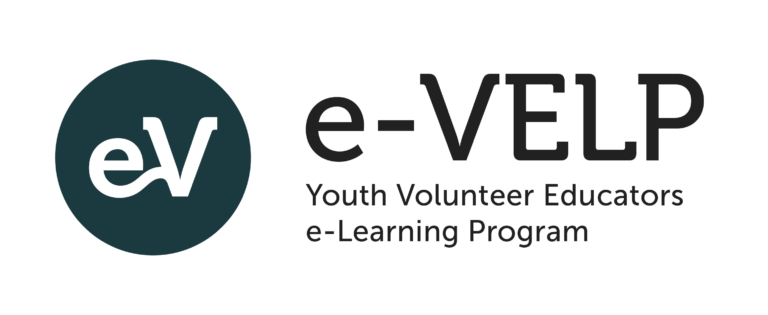1.Abdallah-Pretceille, M. (2006). Interculturalism as a paradigm to think about diversity. Journal of Intercultural Education, 17(5), 457–483. doi:10.1080/14675980601065764.
2.Brander P., Gomes R., Taylor, M. (2016). Education Pack. All different-all equal. Council of Europe. Available: https://rm.coe.int/1680700aac
3.Culture Definitions and Traits. Available: https://www.andrews.edu/~tidwell/bsad560/Culture.html
4.Dervin, F., & Korpela, M. (2013). Cocoon Communities: Togetherness in 21st Century. UK: Cambridge Scholars Publishing.
5.Dervin, F., Leyne, H., & Trémion, V. (2015). Making the Most of Intercultural Education. Newcastle Upon Tyne: Cambridge Scholars Publishing.
6.European Commission (n.y.). Culture. Available: https://ec.europa.eu/home-affairs/what-we-do/networks/european_migration_network/glossary_search/culture_en
7.Grant, & A. Portera, Intercultural and Multicultural Education. Enhancing Global Interconnectedness (p. 12–32). New York, London: Routledge.
8.Greene, M. (2011). Releasing the Imagination: Essays on Education, the Arts and Social Change. San Francisco: Jossey-Bass.
9.Online Cambridge Dictionary (n.y.) Culture. Available: https://dictionary.cambridge.org/dictionary/english/culture
10.Khan Academy (n.y). Cultural relativism article. Available: https://www.khanacademy.org/test-prep/mcat/society-and-culture/culture/a/cultural-relativism-article
11.Kaire. S. 2018. WE ARE IN THE SAME BOAT, YET I AM FROM ANOTHER CULTURE: THE LIVED EXPERIENCES OF LEARNING IN GROUPS DURING MOBILITY. Doctoral Dissertation.
12.Kairė, S. Apie save ir kitus: tarpkultūrinis mokymasis tarptautinės savanorystės metu. Metodinis leidinys. 2020, p. 29. Link: https://www.jtba.lt/wp-content/uploads/2020/06/Tarpkulturinis-mokymasis-tarptautines-savanorystes-metu.pdf
13.Moate, J. (2011). Dialogic space and religious education. Kasvatus & Aika, 5(4), 116–138. Prieiga per internetą: http://www.kasvatus-ja-aika.fi/site/?page_id=441.
14.Messelink, H. E., & ten Thije, J. D. (2012). Unity in super-diversity: European capacity and intercultural inquisitiveness of the Erasmus generation 2.0. Dutch Journal of Applied Linguistics, 1(1), 80–101. doi:10.1075/dujal.1.1.07mes.
15.Nancy, J. L. (2002). L’Intrus. Link to the text: http://www.maxvanmanen.com/files/2014/10/Nancy-LIntrus.pdf.
16.Nancy, J. L. (2015). Identity: Fragments, Frankness. New York: Fordham University Press.
17.Otten, H. (2003). Intercultural learning and diversity in higher education. Journal of Studies in International Education, 7(1), 12–26. doi:10.1177/1028315302250177.
18.Otten, H. (2012). A new intercultural learning concept for the European youth sector? In Y. Ohana, & H. Otten (Eds.), Where Do You Stand? Intercultural Learning and Political Education in Contemporary Europe (p. 183–240). Germany: Springer Fachmedien Wiesbaden.
19.Portera, A. (2011). Intercultural and multicultural education: epistemological and semantic aspects. In A. C.
20. Sandu O. N., Lyamouri-Bajja N. (2018). T-Kit 4. Intercultural Learning. Council of Europe Available: https://pjp-eu.coe.int/documents/42128013/47262514/PREMS+042218+Tkit4+WEB.pdf/37396481-d543-88c6-dccc-d81719537b32
21. Shaules, J. (2007). Deep Culture. The Hidden Challenges of Global Living. Clevedon: Multilingual Matters.
22. Simon Fraser University (2020). Stages and symptoms of culture shock. Available: https://www.sfu.ca/students/isap/explore/culture/stages-symptoms-culture-shock.html
23. UNESCO (1976) Recommendation on Participation by the People at Large in Cultural Life and their Contribution to it. Available: http://portal.unesco.org/en/ev.php-URL_ID=13097&URL_DO=DO_TOPIC&URL_SECTION=201.html
24. University of Minnesota. Foundation of Culture and Identity. https://open.lib.umn.edu/communication/chapter/8-1-foundations-of-culture-and-identity/
25. Vertovec, S. (2007). Super-diversity and its implications. Ethnic and Racial Studies, 30(6), 1024–1054. doi:10.1080/01419870701599465.
26. Waldenfels, B. (2007). The Question of the Other. The Tang Chun-I Lectures for 2004. Honk Kong: The Chinese University Press.
27. Waldenfels, B. (2011). Phenomenology of the Alien. Basic Conceptions. United State of America: Northwestern University Press.
28. Wilson, H. F. (2017). On the paradox of ‘organised’ encounter. Journal of Intercultural Studies, 38(6), 606–620. doi:10.1080/07256868.2017.1386631.
29.Literature: Kairė, S. Apie save ir kitus: tarpkultūrinis mokymasis tarptautinės savanorystės metu. Metodinis leidinys. 2020, p. 29. Link: https://www.jtba.lt/wp-content/uploads/2020/06/Tarpkulturinis-mokymasis-tarptautines-savanorystes-metu.pdf
30. Otten, H. (2003). Intercultural learning and diversity in higher education. Journal of Studies in International Education, 7(1), 12–26. doi:10.1177/1028315302250177.Wilson, H. F. (2017). On the paradox of ‘organised’ encounter. Journal of Intercultural Studies, 38(6), 606–620. doi:10.1080/07256868.2017.1386631.
Kaire. S. 2018. WE ARE IN THE SAME BOAT, YET I AM FROM ANOTHER CULTURE: THE LIVED EXPERIENCES OF LEARNING IN GROUPS DURING MOBILITY. Doctoral Dissertation.
31. Dervin, F., & Korpela, M. (2013). Cocoon Communities: Togetherness in 21st Century. UK: Cambridge Scholars Publishing.
32. Kaire. S. 2018. WE ARE IN THE SAME BOAT, YET I AM FROM ANOTHER CULTURE: THE LIVED EXPERIENCES OF LEARNING IN GROUPS DURING MOBILITY. Doctoral Dissertation.
33.Ahmed, 2000
34. Nancy, J. L. (2002). L’Intrus. Link to the text: http://www.maxvanmanen.com/files/2014/10/Nancy-LIntrus.pdf.
Nancy, J. L. (2015). Identity: Fragments, Frankness. New York: Fordham University Press.
35.Waldenfels, B. (2007). The Question of the Other. The Tang Chun-I Lectures for 2004. Honk Kong: The Chinese University Press.
Waldenfels, B. (2011). Phenomenology of the Alien. Basic Conceptions. United State of America: Northwestern University Press.
36. all different-all equal handbook, 2016.

